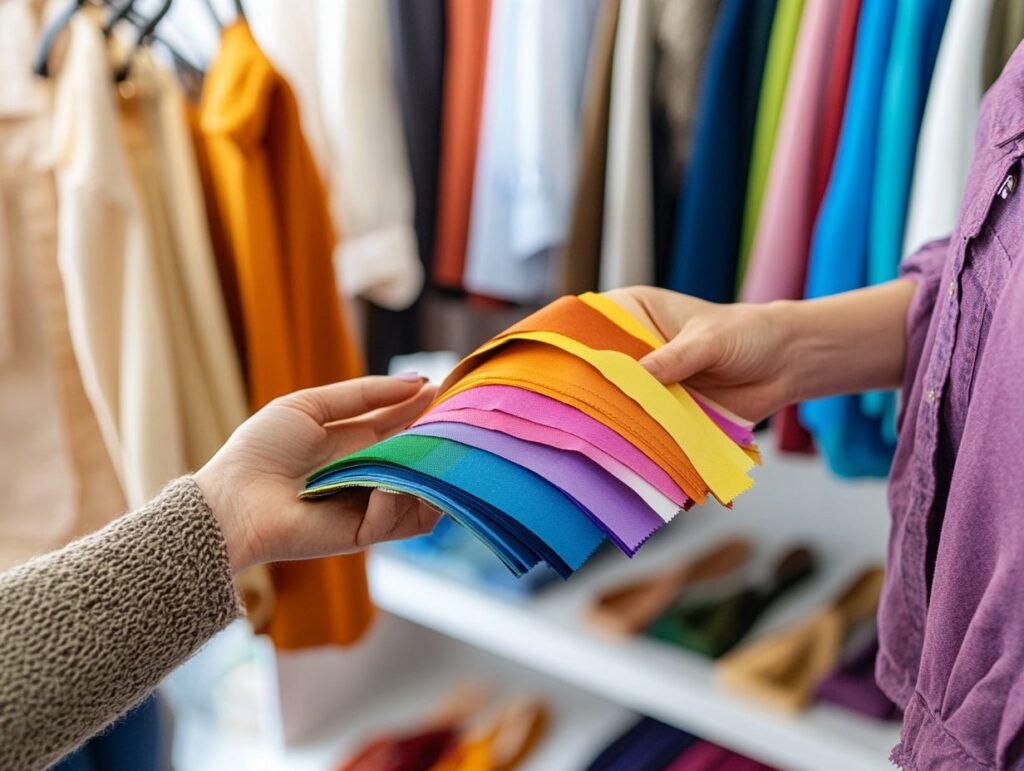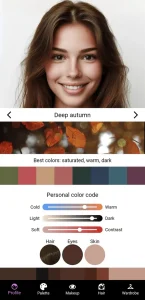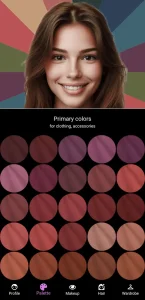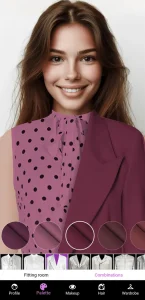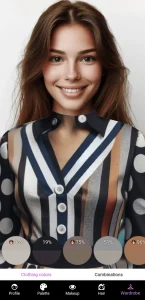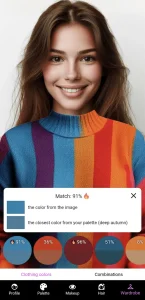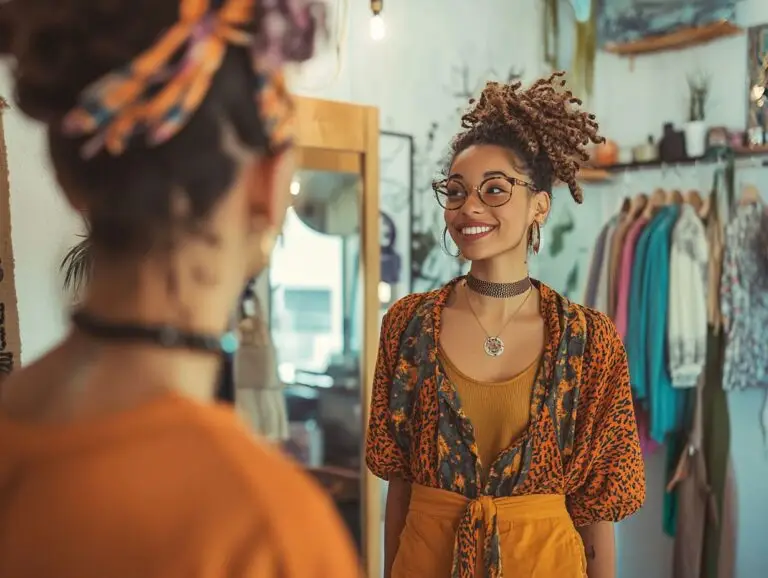Color analysis is a useful tool that can change how you handle fashion and personal style .
Learning the details of color improves your wardrobe choices but also influences mood and perception .
This article explores what color analysis is, the psychology behind color selection, and how various methods—like seasonal color analysis and color draping —can help identify your best hues.
By learning to match colors to your skin tone and creating a cohesive color palette You can improve your style and show your confidence with what you wear.
Discover how the right colors can make all the difference!
Understanding Color Analysis
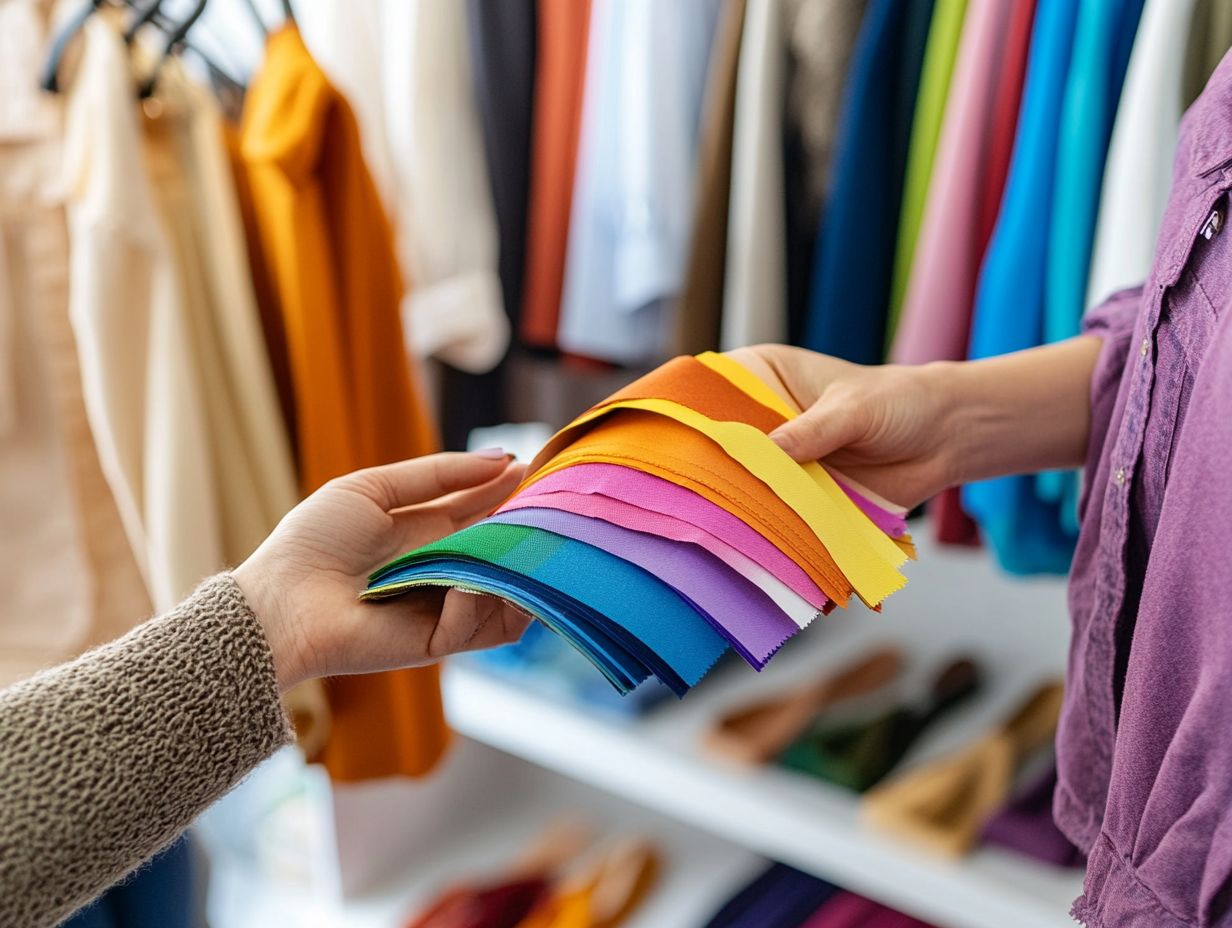
Knowing how to analyze color is important for anyone who wants to improve their clothing choices and color matching and create a personal style that matches who they are.
By examining color theory and its principles, individuals can make informed wardrobe planning decisions that reflect their unique character traits that reflect their unique character traits.
This method looks at seasonal color choices and how they affect feelings, self-confidence , and personal image , helping to plan a wardrobe that looks good.
What is Color Analysis?
Color analysis is a method that looks at colors to find the best ones that suit a person’s skin tone, undertones, and likes. This process uses color theory to find different color qualities and visual appeal , helping people find their best color choices for better wardrobe planning.
By exploring fundamental principles such as warm versus cool tones and the saturation of colors, color analysis delves deeper into the psychological impact of shades on personal expression , fashion personality , and aesthetics and aesthetics.
It helps people learn how to match colors in a pleasing way that enhances visual identity and style evolution , making sure the selected colors highlight their natural look and fit their personal style.
This analysis can help you feel more confident in making fashion and beauty decisions and wardrobe diversity , leading to a wardrobe that better shows your personality.
How it Affects Clothing Selection
Color analysis significantly influences clothing selection by guiding individuals in identifying their color preferences and ensuring effective color matching that enhances their overall appearance. By learning about seasonal colors, individuals can choose outfits that make their body shape look good and match their personal style and image.
This process enables people to make informed decisions about their wardrobe that align with their unique features, such as skin tone and hair color.
It lets you mix colors in a way that enhances your style, making sure each piece fits both personal taste and the mood or event, ensuring effective outfit cohesion .
When people start using color analysis, they often pick colors that reflect who they are, make them feel more confident, and help them develop a strong brand identity .
Ultimately, this careful approach to choosing clothes affects both their wardrobe choices and their visual storytelling in the broader fashion industry and their self-image in the broader fashion industry.
The Psychology of Color
The study of color psychology looks at how various colors can trigger feelings and affect how people see things, which is important in fashion psychology and personal branding and personal branding.
Knowing how colors affect emotions helps people pick outfits that look good together and build a strong professional image that connects with their audience, creating a visually pleasing and confidence boost appearance. that connects with their audience, creating a visually pleasing and confident appearance.
How Color Impacts Mood and Perception
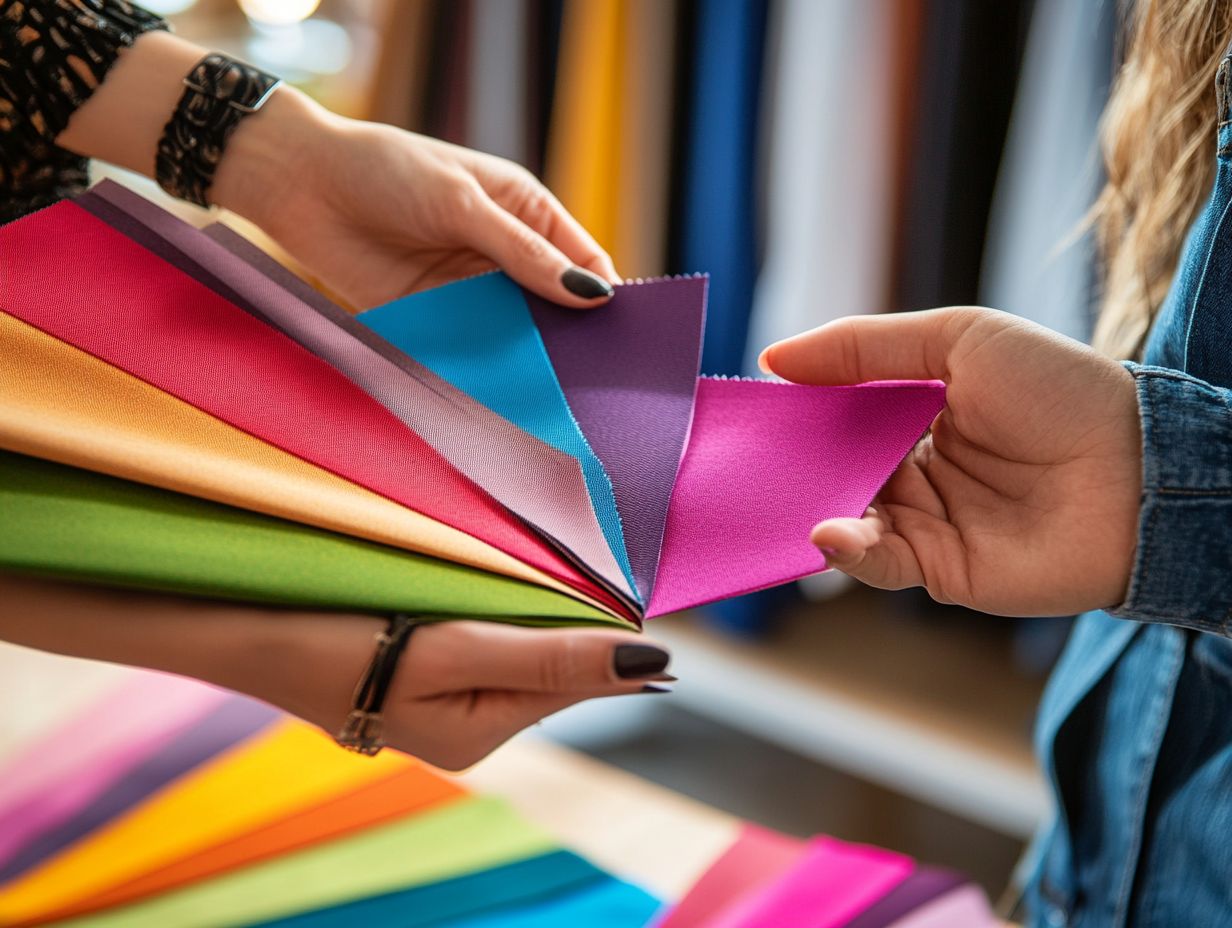
Colors possess the power to significantly impact mood and perception, with each hue carrying its own symbolism and emotional connotations that can influence how an individual is perceived by others. When people know how color affects them, they can choose colors to improve their mood and make their clothing and personal style look more attractive.
For instance, warm colors like red and orange can evoke feelings of excitement and energy, making them perfect for social events, while cooler tones such as blue and green tend to create a sense of calm and tranquility, ideal for professional settings.
The link between color and emotion highlights the important part color plays in personal branding, as it helps express personality and influences how others perceive you.
By carefully choosing colors that match the desired mood, people can improve their interactions and present themselves in a way that encourages positive connections.
Color Analysis Methods
Color analysis methods include different techniques, such as examining colors by seasons, using color fabrics on the skin, and online tools that help determine which colors best match a person’s features.
These methods use color theory principles to guide people in making better clothing decisions.
Seasonal Color Analysis
Seasonal color analysis is a method that categorizes colors into four distinct seasons—spring, summer, autumn, and winter—each associated with specific color palettes that complement various skin tones and undertones. By utilizing this analysis, individuals can effectively integrate seasonal colors into their wardrobe, enhancing their overall aesthetic appeal and ensuring their clothing fit and fabric choice are optimal.
This method helps in selecting clothes, makeup, and accessories that match well with their natural features.
For example, people with spring coloring often pick warm, lively colors that resemble the fresh feeling of spring. In contrast, those with winter coloring look best in strong, cool colors that match the clear, crisp nature of winter, thus enhancing their visual appeal .
Knowing these categories helps people choose their clothes with certainty, making sure every item matches their individual colors and style choices.
Ultimately, integrating the right seasonal colors allows for a more polished presentation, showcasing one’s personality, enhancing self-expression, and ensuring a professional image .
Color Draping
Color draping is a practical technique used in color analysis to determine which colors harmonize with an individual’s skin tone and personal preferences through the use of fabric swatches. This method helps match colors well, guiding people to choose fabrics that improve the variety and look of their wardrobe.
As the individual drapes various fabric swatches across their shoulders or near their face, they can observe how different shades and tones interact with their natural complexion.
This practical method shows how certain colors can make someone look more energetic or less lively. It also helps people choose colors that fit their personal style and achieve effective color coordination .
Through careful observation, they can pinpoint their best colors, leading to more flattering clothing selections and enhancing their wardrobe essentials .
In the end, the color draping process helps people learn more about personal color choices, leading to a more unified and lively wardrobe that matches their personality.
Online Color Analysis Tools
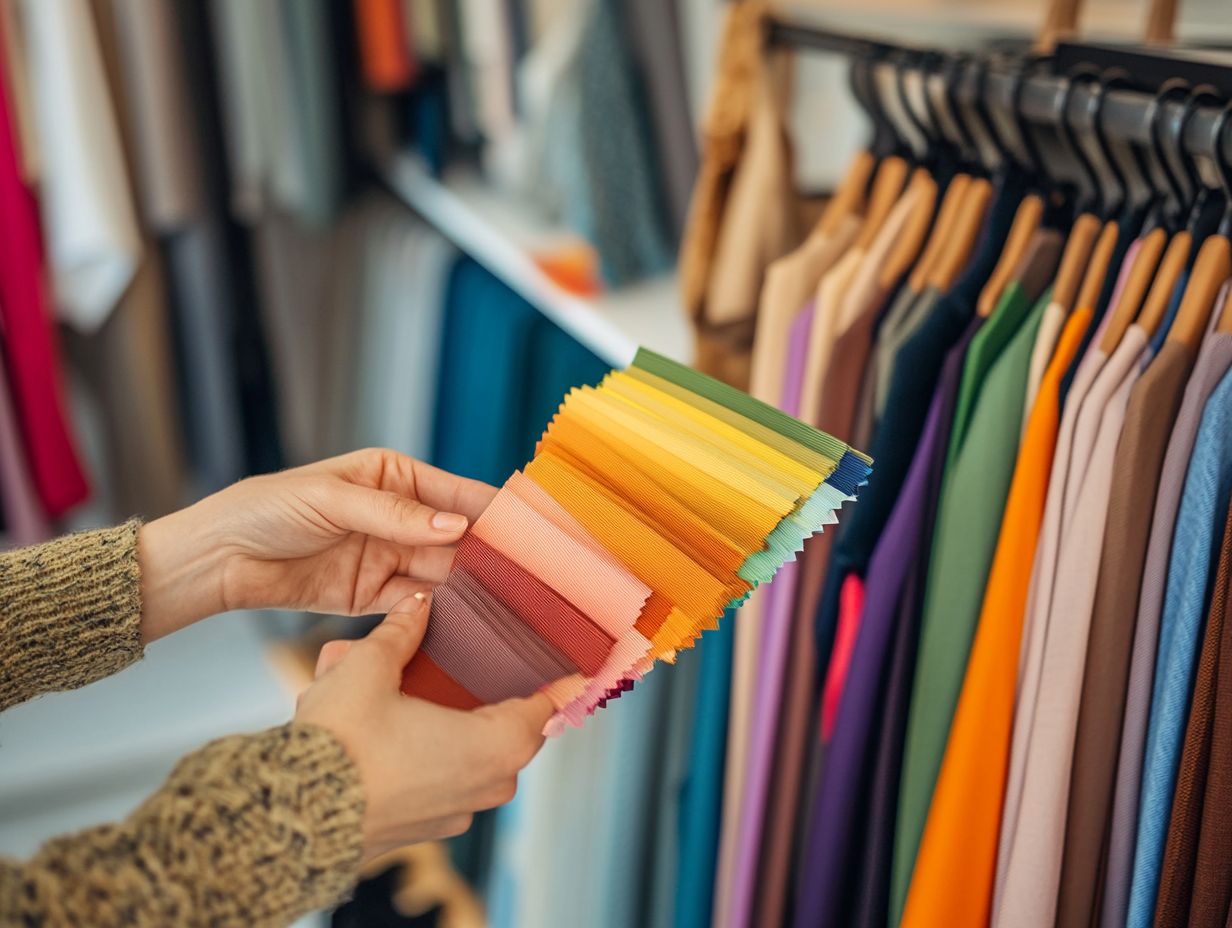
Online color analysis tools have revolutionized the way individuals approach color analysis, offering accessible platforms to determine their optimal color palettes without the need for professional consultations. These tools help users create good shopping plans and pick colors that improve their personal brand and style.
By utilizing sophisticated algorithms and user-friendly interfaces, these platforms often allow individuals to upload their photos, then analyze skin tones, eye colors, and hair hues to recommend the most flattering shades, enhancing their color representation .
Many of these online tools give custom fashion advice and show how to mix these colors, making it easier to plan your wardrobe and make the best use of it outfit combinations .
Some platforms have parts where people can share their experiences and offer tips, forming a supportive community for those wanting to improve their style and improve their skills. visual identity .
These tools allow users to make sure they pick clothing that fits their personal style and individual traits. appearance enhancement .
Choosing the Right Colors for Your Skin Tone
Picking the right colors for your skin involves knowing your undertones (warm, cool, or neutral) and choosing shades that match your natural complexion.
This process of color matching is important for creating a wardrobe that fits well together, enhances personal style , and increases self-assurance , enhances personal style, and increases self-assurance.
Determining Your Skin Undertones
Figuring out your skin undertones is important for choosing colors that match your natural look. Skin can be warm, cool, or neutral based on small color differences. This knowledge is essential for planning outfits, helping people select colors that improve their appearance.
To identify these undertones, one can look for subtle clues such as the appearance of veins on the wrist. If the veins appear greenish, the individual likely falls into the warm category, often exhibiting golden or peachy hints.
Conversely, blue or purple veins suggest a cool undertone, typically associated with pink or rosy skin tones. Neutral undertones present a mix, often appearing neither too warm nor too cool.
Lightening the process with natural light, examining the skin against different colors, and considering how specific shades affect the overall look can significantly aid in determining these undertones accurately.
Matching Colors to Your Undertones
Matching colors to your undertones involves selecting complementary colors that harmonize with your skin tone, creating a balanced and visually appealing look. This process improves individual features and ensures outfit cohesion and gives useful information about effective color combinations and outfit coordination.
Knowing if your skin tone is warm, cool, or neutral helps in selecting colors that match your skin and achieve effective color harmony .
For instance, those with warm undertones often shine in earthy tones like olive green, rich browns, and other earthy tones , while cool undertones are best complemented by jewel tones such as sapphire and emerald.
Knowing these differences helps in choosing clothes that match the skin tone, making the whole appearance better.
Think about adding accessories or makeup in these matching colors, as they can improve how everything looks together and make the personal style more unified.
Improve Your Wardrobe with Color Analysis
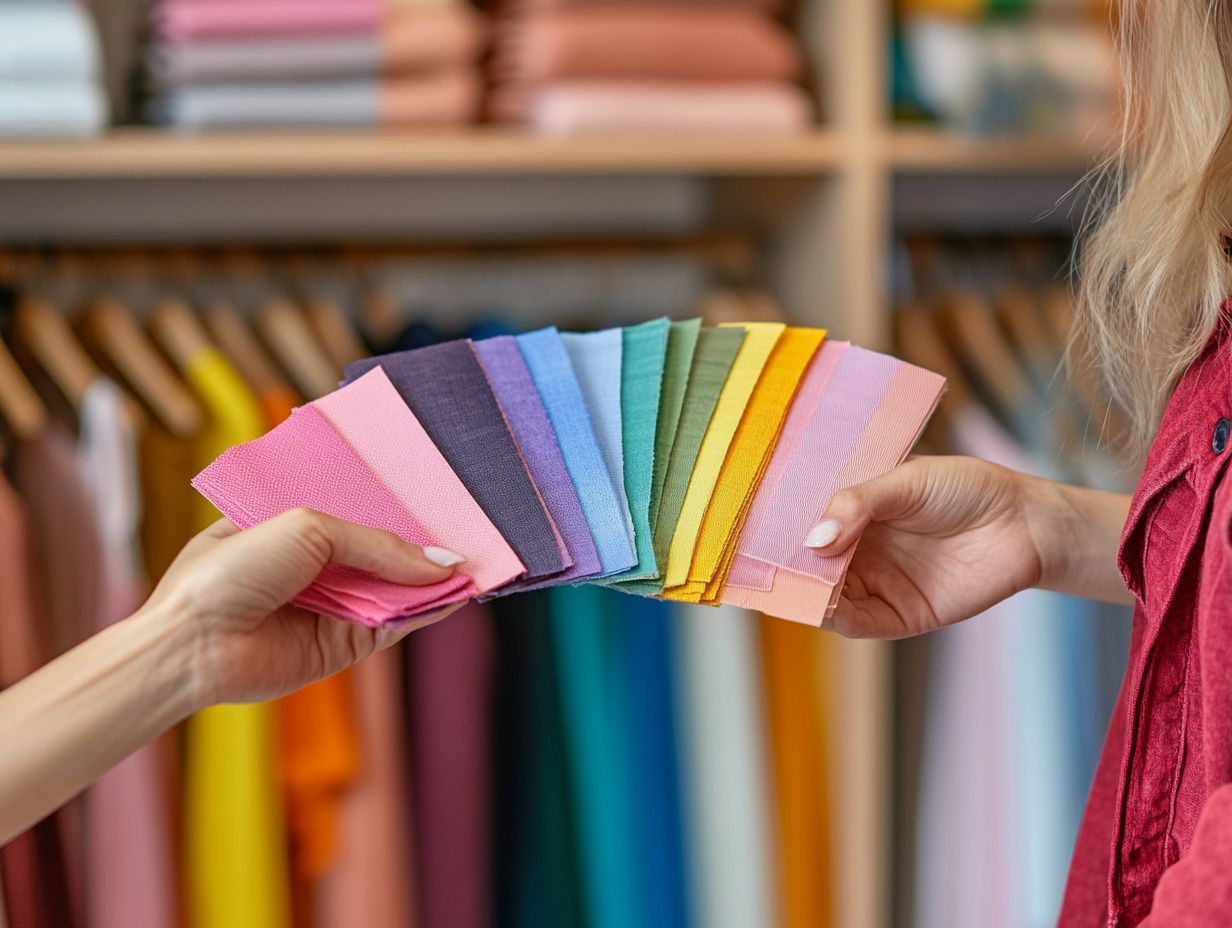
Analyzing colors for your wardrobe involves creating a uniform color scheme that reflects your personal style and preferences. This aids in wardrobe planning, outfit cohesion, and selecting essential pieces for your clothing collection.
This plan helps people choose a set of pieces that match, fit well, and look good together, enhancing overall visual appeal.
Creating a Color Palette
Creating a color palette involves selecting a range of hues that aesthetically work together, providing a foundation for individual style and visual storytelling. This process allows for the exploration of various color combinations, enhancing wardrobe diversity and ensuring cohesive outfit coordination. The color palette also plays a role in personal branding and professional image.
To begin this process, people should first determine their personal tastes and skin undertones, as these aspects greatly affect how colors suit their appearance. Seasonal colors and color preference are also important considerations.
Trying out different colors can help find unique mixes that show off personal style, make outfits look better, and improve how clothes appear.
Using tools like the color wheel, you can pick matching and opposite colors to create a well-balanced and interesting wardrobe. Color theory and color psychology are essential in this process, guiding the choice of complementary colors and shades.
Ultimately, a well-considered color palette enables individuals to express their identity confidently, creating polished looks that stand out while remaining true to their style. This can make them feel more assured and improve how they present themselves visually.
Mixing and Matching Colors
Mixing and matching colors is an art that involves combining different hues to create visually appealing outfits, enhancing overall outfit coordination. Techniques such as color blocking allow individuals to experiment with contrasts and saturation levels, enriching their wardrobe with unique and expressive looks. Knowing how colors work together and choosing rich colors is important for getting the look you want.
Color theory is very important in this creative process. Knowing how complementary and similar colors work can improve how you dress, helping you create matching outfits more easily. Color classification and color symbolism can further guide your choices.
For instance, pairing colors that are opposite on the color wheel can create striking contrasts, while those that are adjacent can lead to softer, more harmonious combinations. Knowing how colors contrast and match can greatly improve your fashion sense.
Incorporating textures and patterns into the color coordination can add depth and interest to an outfit, inviting an opportunity for personal expression that resonates with the wearer’s mood and personality. This method can improve how the outfit tells a visual story.
Avoiding Color Clashes
Avoiding color clashes is essential for maintaining visual harmony in an outfit, ensuring that chosen colors complement rather than compete with each other. By knowing how to balance colors and use them together, people can put together outfits that align with their own style and identity. This requires knowing how colors affect appearance and the basics of good dressing.
To achieve this, one effective strategy involves utilizing a color wheel to identify complementary hues and analogous shades that naturally work together. Consulting fashion guides and fashion consultants can provide additional shopping tips and fashion advice.
Considering the 60-30-10 rule can be beneficial, where 60% of the outfit is a dominant color, 30% a secondary, and 10% an accent. This rule helps in achieving color coordination and outfit planning.
This balanced approach fosters a pleasing visual narrative, guiding the eye rather than overwhelming it. It also contributes to the overall aesthetic appeal and visual representation.
Trying out different textures and patterns can improve the look and add layers, allowing people to show their personal style without creating an overwhelming mix. This strategy aligns with sustainable fashion principles and enhances the shopping experience.

